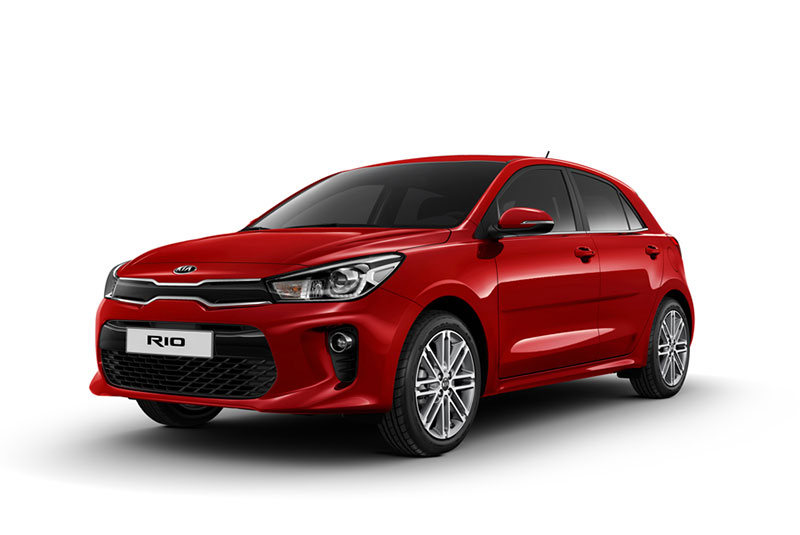Anti-Distracted Driving Act & navigational apps (plus Kia unveils new Rio)

Republic Act No. 10913 or the Anti-Distracted Driving Act (ADDA) has been implemented nationwide starting May 18, 2017. Within the first two days of the ADDA’s implementation, the Metro Manila Development Authority (MMDA) reported that around 300 motorists were apprehended for violating such law. According to the MMDA most of the violators were motorcycles drivers using their cellphones.
In a nutshell, the ADDA prohibits motorists (i.e., persons driving a motor vehicle) from using mobile phones, communication devices, other electronic entertainment and computing gadgets while vehicles are in motion or temporarily stopped on a traffic light or an intersection. Acts prohibited by this law include making or receiving calls; writing/composing, sending or reading text-based communications; playing games; watching videos; browsing the internet; reading e-books. This enumeration is not exhaustive as the ADDA has a catch-all provision covering “other similar acts.”
The prohibition applies not only to cars or mechanical vehicles but also to other types of human- or animal-powered conveyances (such as motorcycles, bicycles, pedicabs or kalesas) that are operated or driven in public thoroughfares, highways, streets or under circumstances where public safety is a consideration.
While the ADDA serves a significant role in guarding the safety of people against vehicular or road accidents, it cannot be denied that navigational applications (or apps) have become a necessity for so many people. Apps that help avoid traffic congestion (such as Waze) are extremely helpful for motorists who drive through Metro Manila.
Fortunately, the ADDA does not prohibit the use of traffic and navigational apps. The ADDA explicitly allows motorists to use mobile phones, communication devices and other gadgets with the aid of hands-free function and similar applications as long as these do not interfere with the driver’s line of sight. Thus, motorists may use navigational apps (like Waze, Google Maps or Garmin) by placing mobile phones or gadgets in various areas that do not obstruct or interfere with the driver’s view. Areas that are considered as interfering with the driver’s line of sight include the car’s dashboard, windshield or steering wheel. The driver’s left window is an area where a mobile phone or device can be installed to use navigational apps.
To ensure safety, motorists are advised to set their preferred destination on these applications prior to their departure. Motorists in transit who need to find alternate routes or change their destination while in traffic may use their navigational apps, provided that they first pull their vehicles aside.
While navigational apps may be used, the ADDA compels motorists to prioritize safety. Something to keep in mind is—It’s better to be lost or stuck in traffic, than be a hazard to the public.
The new Kia Rio unveiled in Manila
When the fourth-generation Kia Rio was unveiled at the Paris Motor Show last September 2016, it showed why this car gives drivers the “Freedom to Be You.” The new Kia Rio is sleeker, sportier and equipped with Kia’s latest technology and design innovations—earning it the prestigious 2017 Red Dot Awards in its category.
Members of the media welcomed the new Kia Rio’s arrival in the Philippines during its launch in Manila last May 16 by Columbian Autocar Corporation (CAC), Kia’s exclusive distributor in the Philippines.
The crowd gathered in anticipation as CAC President Ginia Domingo and CAC Vice-President for Sales & Marketing Hernando Gañac took off the cover from a striking red new Kia Rio.
The new Rio is an imposing figure on the streets. It is five millimeters wider and 15mm longer than its predecessor, and the hood has a larger surface area matched with a more upright C-pillar. Kia’s trademark tiger-nose grille and sporty headlights add to its appeal.
The Rio is powered by a lightweight 1.4-liter DOHC D-CVVT 100ps/13.6kg-m 4-cylinder engine paired with a 4-speed automatic transmission—a combination that makes it fit for driving in various conditions in urban streets, country roads or highways.
The inside of the Rio is designed to provide comfort and efficiency for the driver. The steering wheel has mounted buttons for audio and cruise control and is height-adjustable. The dashboard is driver-oriented with ergonomic and easy to access controls.
Notable features include an airconditioned glove box, rain-sensing automatic wipers, trip computer, front/rear power outlets, LED taillamps, dual airbags, ABS, keyless entry with engine immobilizer, push-button engine start/stop, a four-speaker radio/CD/MP3/Aux/USB/Bluetooth-enabled audio system, and 17-inch alloy wheels with 205/45R17 performance tires.
With its revamped look, upgraded features and attractive price point (suggested retail price starts at P735,000), the new Kia Rio will likely make waves in the Philippine market once it becomes available starting June 2017.
- Latest

























